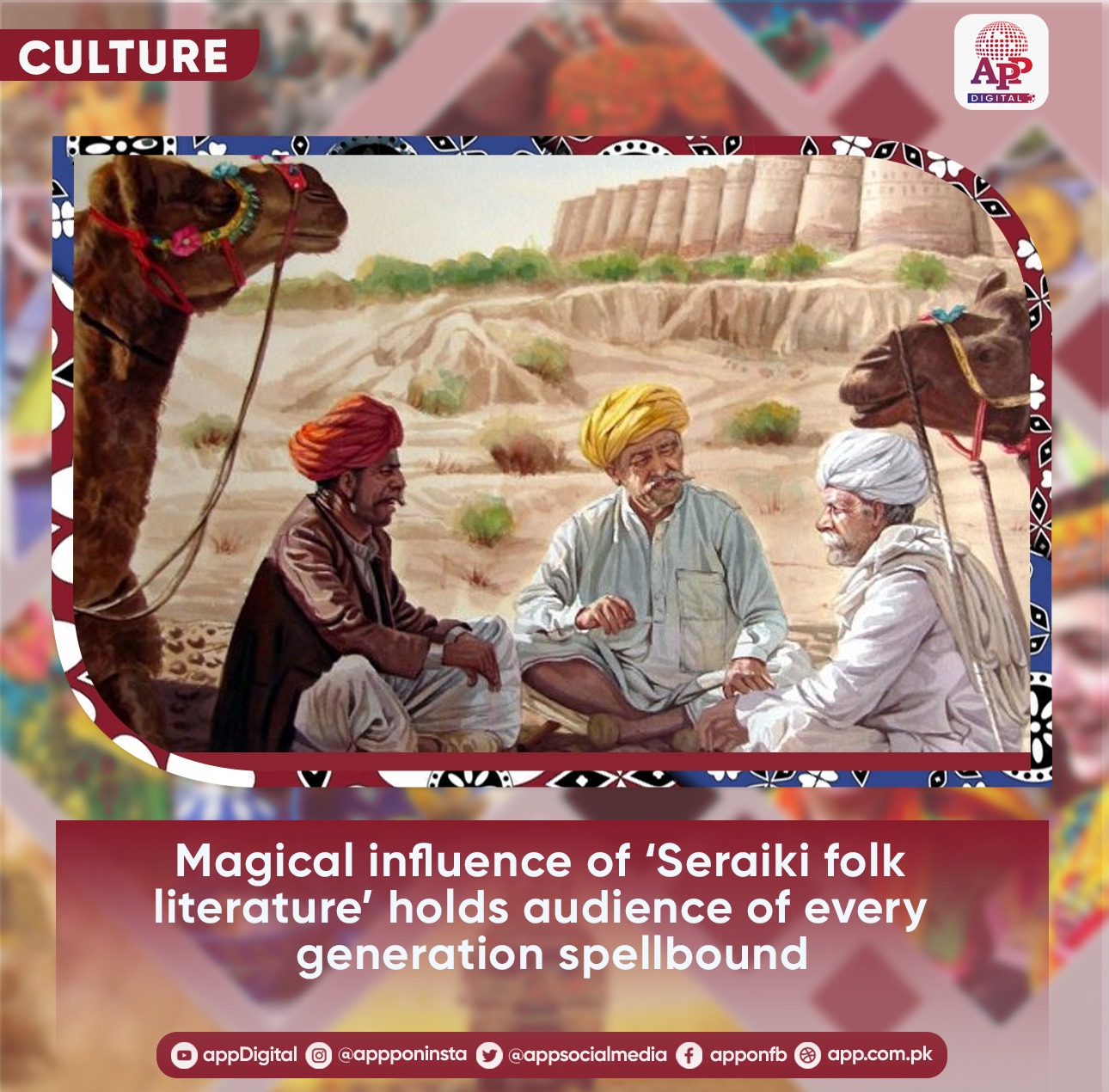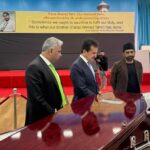By Salman Raza
MULTAN, Mar 10 (APP): Seraiki folk literature is all the way around has soothing effects and magic influence on audience of almost every generation through manifestation of literary works of fictions, stories, plays and music with lively content.
It has been reaching out to everyone of Seraiki population living in different parts of the country with different dialects of the language. The widely reminisced as sweet-tempered language, a feather in the cap of the dialect which none other owes to any other language in the globe.
History of Seraiki region dates back to approximately 45,00 years in the Indus Civilization whereas its literature has gradually travelled from classic to modern trends as the time goes by. The basic theme of the literature seems to have revolved around sob and sadness. It is full of wailing and crying besides depiction of deprivations in it.
According to Shehzad, Seraiki folk literature is a ‘resistance literature’ same as Punjabi, Pashtu and Balochi having the ability of artistic expression to confront oppressive power structures. That’s spirit of resistance you won’t find in Urdu and English literature even so effectively, he maintained.
Sokri insisted upon his argument of vanishing ‘resistance’ from Seraiki literature, saying that he started composing poetry in 1958 and had written Saraiki ghazal in 1961-62 adding that poems and dohra were already in vogue depicting lack of resistance. He said he was bitterly opposed to write ghazal in the beginning by the critics who believed that it had no place in Saraiki literature but later they were convinced that literature took time in its recognition.
Mr Sokri said that late journalist, Khan Rizwani, Mehar Abdul Haq, Umer Kamal Khan, Bashir Zami, Brig (rtd) Nazir Ali Shah, Nizamuddin Leghari worked a lot for Saraiki literature adding Alsam Rasoolpuri also did a lot of work on research but now no one was conducting research on it. He said ghazal in Seraiki is a difficult kind of literature, but a single ghazal offers six or seven subjects in it. He said among nine of his books, seven are on ghazal with two of poems, kafi and dohra.
“Zameen Jagdi Hai, Hanjoun de Haar, Dohkh di Jang, Kaley Ru, Chiti Barf, Warqa, Warqa Zakhhmi, Lee ru leer Pachawan, Uthwan Asmaan and Bey Unt” are his contributions to Saraiki Literature,” he informed.
According to research of bimonthly Academic Journal, The Journal of Positive Psychology, Saraiki is a standard language of Pakistan belonging to Indo-Aryan languages despite emerged in many dialects.
‘There is no documented evidence of a common identity, but it is based on a group of dialects written in the local language and historically spoken by over 18 million people.
There is a long list of famous poets from the region and their work is admirable. Sachal Sar- Mast, Shah Abdul Latif Bhattai and Ghulam Farid are some of the famous poets.
Multan stands as an administrative unit of the Saraiki region, a mix of Sufism and Saraiki culture. It’s now called the mother of Saraiki areas that make up 8.38% of the various ethnic groups.
“Folk literature used to be heritage of any nation. Seraiki literature is enriched with folk tale saying, folk songs, epics and stories, said Dr Khalid, the recently retired Station Director of Radio Pakistan Multan and visiting professor of Bahauddin Zakariya University.
The Saraiki poetry has four phases and its story revolves around two poets including Luft Ali Khan and Khawja Ghulam Farid. The magnificent poetry of Khawaja Ghulam Farid celebrates scenery of local desert with an abundance of purely parochial vocabulary and continues to be a major inspiration of modern Saraiki Literature. Dawaan-i- Farid is his famous collection.
Saraiki singers who have earned names at home and abroad included: Suraiya Multanikr, Abida Perveen, Atta Ullah Khan Essa Khilvi, Pathanay Khan, Ustad Muhammad Jumman, Mansoor Malangi, Shafa Ullah Khan Rokhri, Ahmed Nawaz Cheena etc.
In the world of broadcasting, Dr Nasrullah Khan Nasir, Pride of Performance Qaisar Naqvi, Dr Nazim Labar, Late Shamshir Haider Hashmi, Ali Tanha, Mohsin Gillani, Kausar Samreen, Jaffar Baloch, Riaz Mailsi and Rizwana Tabassum are known figures hailing from Saraiki region.
Living Legend Shakir Shujabadi, Late Arshad Multani, Ashiq Khan Buzdar, Dr Riffat Abbas, Dr Ashraf Shoua popularly known as Ashoo Lal, Aziz Shahid, Late Ahmed Khan Tariq, Jahangir Mughlis, Dr Najma Shaheen Khosa and Aman Ullah Arshad are some of the renowned poets who wrote on a variety of topics including commoners and their sufferings.
“Assan Qiadi Takht Lahore De” is a poem which made Ashiq Buzdar a household name which struck the hearts of Saraiki as well as other readers. He used to organize the annual Saraiki culture festival. He is a towering personality who has always voiced on Saraikis issues.
Acclaimed broadcaster and academician, Dr Nasrullah Khan Nasir said, in the Indus Valley, Saraiki region was considered as its heart as great ancient cities Harappa and Mohenjo Daro existed in its right and left sides and added that South Punjab is a land of enriched culture.
Ancient Multani, Brahami, Devenagari writing styles are kinds of Saraiki writing patterns, Dr Nasir said, adding that Arabic and Persian writing systems also influenced it.






